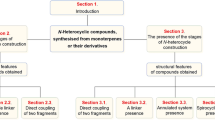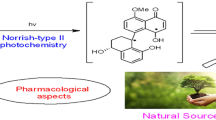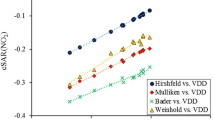Abstract
The naphthalene dioxygenase from Sphingomonas CHY-1 exhibits extremely broad substrate specificity toward polycyclic aromatic hydrocarbons (PAHs). In a previous study, the catalytic rates of oxidation of nine PAHs were determined using the purified dioxygenase, but the oxidation products formed from four- to five-ring hydrocarbons were incompletely characterized. Here, we reexamined PAH oxygenation reactions using Escherichia coli recombinant cells overproducing strain CHY-1 dioxygenase. Hydroxylated products generated by the dioxygenase were purified and characterized by means of GC-MS, UV absorbance as well as 1H- and 13C-NMR spectroscopy. Fluoranthene was converted to three dihydrodiols, the most abundant of which was identified as cis-7,8-dihydroxy-7,8-dihydrofluoranthene. This diol turned out to be highly unstable, converting to 8-hydroxyfluoranthene by spontaneous dehydration. The dioxygenase also catalyzed dihydroxylations on the C2–C3 and presumably the C1–C2 positions, although at much lower rates. Benz[a]anthracene was converted into three dihydrodiols, hydroxylated in positions C1–C2, C8–C9, and C10–C11, and one bis-cis-dihydrodiol. The latter compound was identified as cis,cis-1,2,10,11-tetrahydroxy-1,2,10,11-tetrahydrobenz[a]anthracene, which resulted from the subsequent dioxygenation of the 1,2- or 10,11-dihydrodiols. Chrysene dioxygenation yielded a single diol identified as cis-3,4-dihydroxy-3,4-dihydrochrysene, which underwent further oxidation to give cis,cis-3,4,9,10 chrysene tetraol. Pyrene was a poor substrate for the CHY-1 dioxygenase and gave a single dihydrodiol hydroxylated on C4 and C5, whereas benzo[a}pyrene was converted to two dihydrodiols, one of which was identified as cis-9,10-dihydrodiol. The selectivity of the dioxygenase is discussed in the light of the known 3D structure of its catalytic component and compared to that of the few enzymes able to attack four- and five-ring PAHs.


Similar content being viewed by others
References
Bamforth SM, Singleton I (2005) Bioremediation of polycyclic aromatic hydrocarbons: current knowledge and future directions. J Chem Technol Biotechnol 80:723–736
Boyd DR, Sharma ND, Agarwal R, Resnick SM, Schocken MJ, Gibson DT, Sayer JM, Yagi H, Jerina DM (1997) Bacterial dioxygenase-catalysed dihydroxylation and chemical resolution routes to enantiopure cis-dihydrodiols of chrysene. J Chem Soc-Perkin Trans 1(11):1715–1723
Boyd DR, Sharma ND, Belhocine T, Malone JF, McGregor S, Allen CCR (2006) Dioxygenase-catalysed dihydroxylation of arene cis-dihydrodiols and acetonide derivatives: a new approach to the synthesis of enantiopure tetraoxygenated bioproducts from arenes. Chem Commun 47:4934–4936
Boyd DR, Sharma ND, Coen GP, Hempenstall F, Ljubez V, Malone JF, Allen CCR, Hamilton JTG (2008) Regioselectivity and stereoselectivity of dioxygenase catalysed cis-dihydroxylation of mono- and tri-cyclic azaarene substrates. Org Biomol Chem 6(21):3957–3966
Boyd DR, Sharma ND, Hempenstall F, Kennedy MA, Malone JF, Allen CCR, Resnick SM, Gibson DT (1999) bis-cis-Dyhydrodiols: a new class of metabolites resulting from biphenyl dioxygenase-catalyzed sequential asymetric cis-dihydroxylation of polycyclic arenes and heteroarenes. J Org Chem 64:4005–4011
Demaneche S, Meyer C, Micoud J, Louwagie M, Willison JC, Jouanneau Y (2004) Identification and functional analysis of two aromatic ring-hydroxylating dioxygenases from a Sphingomonas strain degrading various polycyclic aromatic hydrocarbons. Appl Environ Microbiol 70:6714–6725
Doyle E, Muckian L, Hickey AM, Clipson N (2008) Microbial PAH Degradation. Adv Appl Microbiol 65:27–66
Ferraro DJ, Brown EN, Yu CL, Parales RE, Gibson DT, Ramaswamy S (2007) Structural investigations of the ferredoxin and terminal oxygenase components of the biphenyl 2,3-dioxygenase from Sphingobium yanoikuyae BI. BMC Struct Biol 7(10)
Gibson DT, Mahadevan V, Jerina DM, Yogi H, Yeh HJ (1975) Oxidation of the carcinogens benzo [a] pyrene and benzo [a] anthracene to dihydrodiols by a bacterium. Science 189(4199):295–297
Heitkamp MA, Freeman JP, Miller DW, Cerniglia CE (1988) Pyrene degradation by a Mycobacterium sp.: identification of ring oxidation and ring fission products. Appl Environ Microbiol 54:2556–2565
Jakoncic J, Jouanneau Y, Meyer C, Stojanoff V (2007a) The catalytic pocket of the ring-hydroxylating dioxygenase from Sphingomonas CHY-1. Biochem Biophys Res Commun 352:861–866
Jakoncic J, Jouanneau Y, Meyer C, Stojanoff V (2007b) The crystal structure of the ring-hydroxylating dioxygenase from Sphingomonas CHY-1. Febs J 274:2470–2481
Jerina DM, Selander H, Yagi H, Wells MC, Davey JF, Mahadevan V, Gibson DT (1976) Dihydrodiols from anthracene and phenathrene. J Am Chem Soc 98(19):5988–5996
Jerina DM, Vanbladeren PJ, Yagi H, Gibson DT, Mahadevan V, Neese AS, Koreeda M, Sharma ND, Boyd DR (1984) Synthesis and absolute-configuration of the bacterial cis-1,2-dihydrodiol, cis-8,9-dihydrodiol, and cis-10,11-dihydrodiol metabolites of benz[a]anthracene formed by a strain of Beijerinckia. J Org Chem 49:3621–3628
Jouanneau Y, Martin F, Krivobok S, Willison JC (2011) Ring-hydroxylating dioxygenases involved in PAH biodegradation: structure, function and biodiversity. In: Koukkou AI (ed) Microbial bioremediation of non metals: current research. Caister Academic Press, Norflok, UK, pp 149–175
Jouanneau Y, Meyer C, Jakoncic J, Stojanoff V, Gaillard J (2006) Characterization of a naphthalene dioxygenase endowed with an exceptionally broad substrate specificity toward polycyclic aromatic hydrocarbons. Biochemistry 45(40):12380–12391
Juhasz AL, Naidu R (2000) Bioremediation of high molecular weight polycyclic aromatic hydrocarbons: a review of the microbial degradation of benzo a pyrene. Intern Biodeter Biodeg 45:57–88
Karlsson A, Parales JV, Parales RE, Gibson DT, Eklund H, Ramaswamy S (2003) Crystal structure of naphthalene dioxygenase: side-on binding of dioxygen to iron. Science 299(5609):1039–1042
Kim SJ, Kweon O, Freeman JP, Jones RC, Adjei MD, Jhoo JW, Edmondson RD, Cerniglia CE (2006) Molecular cloning and expression of genes encoding a novel dioxygenase involved in low- and high-molecular-weight polycyclic aromatic hydrocarbon degradation in Mycobacterium vanbaalenii PYR-1. Appl Environ Microbiol 72(2):1045–1054
Kim SJ, Kweon O, Jones RC, Freeman JP, Edmondson RD, Cerniglia CE (2007) Complete and integrated pyrene degradation pathway in Mycobacterium vanbaalenii PYR-1 based on systems biology. J Bacteriol 189:464–472
Krivobok S, Kuony S, Meyer C, Louwagie M, Willison JC, Jouanneau Y (2003) Identification of pyrene-induced proteins in Mycobacterium sp. 6PY1: Evidence for two ring-hydroxylating dioxygenases. J Bacteriol 185:3828–3841
Kunihiro M, Ozeki Y, Nogi Y, Hamamura N, Kanaly RA (2013) Benz[a]anthracene biotransformation and production of ring fission products by Sphingobium sp. strain KK22. Appl Environ Microbiol 79:4410–4420
Kweon O, Kim S-J, Baek S, Chae J-C, Adjei M, Baek D-H, Kim Y-C, Cerniglia C (2008) A new classification system for bacterial Rieske non-heme iron aromatic ring-hydroxylating oxygenases. BMC Biochem 9:11
Kweon O, Kim S-J, Jones RC, Freeman JP, Adjei MD, Edmondson RD, Cerniglia CE (2007) A polyomic approach to elucidate the fluoranthene-degradative pathway in Mycobacterium vanbaalenii PYR-1. J Bacteriol 189:4635–4647
Kweon O, Kim SJ, Freeman JP, Song J, Baek S, Cerniglia CE (2010) Substrate specificity and structural characteristics of the novel Rieske nonheme iron aromatic ring-hydroxylating oxygenases NidAB and NidA3B3 from Mycobacterium vanbaalenii PYR-1. mBio 1(2):e00135-10–e00135-20
Lopez Z, Vila J, Minguillon C, Grifoll M (2006) Metabolism of fluoranthene by Mycobacterium sp strain AP1. Appl Microbiol Biotechnol 70:747–756
Lu X-Y, Zhang T, Fang HH-P (2011) Bacteria-mediated PAH degradation in soil and sediment. Appl Microbiol Biotechnol 89:1357–1371
Lyu Y, Zheng W, Zheng T, Tian Y (2014) Biodegradation of polycyclic aromatic hydrocarbons by Novosphingobium pentaromativorans US6-1. Plos One 9(7) doi:10.1371/journal.pone.0101438
Maeda AH, Nishi S, Hatada Y, Ozeki Y, Kanaly RA (2014) Biotransformation of the high-molecular weight polycyclic aromatic hydrocarbon (PAH) benzo k fluoranthene by Sphingobium sp strain KK22 and identification of new products of non-alternant PAH biodegradation by liquid chromatography electrospray ionization tandem mass spectrometry. Microbial Biotechnol 7:114–129
Nam JW, Nojiri H, Yoshida T, Habe H, Yamane H, Omori T (2001) New classification system for oxygenase components involved in ring-hydroxylating oxygenations. Biosci Biotechnol Biochem 65:254–263
Parales RE, Resnick SM (2006) Aromatic ring hydroxylating dioxygenases. In: Ramos JL, Levesque RC (eds) Pseudomonas. vol 4. Springer, pp 287–340
Peng RH, Xiong AS, Xue Y, Fu XY, Gao F, Zhao W, Tian YS, Yao QH (2008) Microbial biodegradation of polyaromatic hydrocarbons. FEMS Microbiol Rev 32(6):927–955
Rehmann K, Hertkorn N, Kettrup AA (2001) Fluoranthene metabolism in Mycobacterium sp strain KR20: identity of pathway intermediates during degradation and growth. Microbiology-Sgm 147:2783–2794
Schneider J, Grosser R, Jayasimhulu K, Xue W, Warshawsky D (1996) Degradation of pyrene, benz[a]anthracene, and benzo[a]pyrene by Mycobacterium sp. strain RJGII-135, isolated from a former coal gasification site. Appl Environ Microbiol 62:13–19
Story SP, Parker SH, Hayasaka SS, Riley MB, Kline EL (2001) Convergent and divergent points in catabolic pathways involved in utilization of fluoranthene, naphthalene, anthracene, and phenanthrene by Sphingomonas paucimobilis var. EPA505. J Ind Microbiol Biotechnol 26(6):369–382
Vila J, Lopez Z, Sabate J, Minguillon C, Solanas AM, Grifoll M (2001) Identification of a novel metabolite in the degradation of pyrene by Mycobacterium sp strain AP1: actions of the isolate on two- and three-ring polycyclic aromatic hydrocarbons. Appl Environ Microbiol 67:5497–5505
Willison JC (2004) Isolation and characterization of a novel sphingomonad capable of growth with chrysene as sole carbon and energy source. FEMS Microbiol Lett 241:143–150
Yu CL, Liu W, Ferraro DJ, Brown EN, Parales JV, Ramaswamy S, Zylstra GJ, Gibson DT, Parales RE (2007) Purification, characterization, and crystallization of the components of a biphenyl dioxygenase system from Sphingobium yanoikuyae B1. J Ind Microbiol Biotechnol 34(4):311–324
Acknowledgments
The authors are grateful to the CNRS and Univ Grenoble Alpes for funding. This work was also supported in part by a grant from the ANR “programme Labex” (ARCANE project no. ANR-11-LABX-003).
Author information
Authors and Affiliations
Corresponding author
Ethics declarations
Conflict of interest
The authors declare that they have no competing interests.
Electronic supplementary material
Below is the link to the electronic supplementary material.
ESM 1
(PDF 223 kb)
Rights and permissions
About this article
Cite this article
Jouanneau, Y., Meyer, C. & Duraffourg, N. Dihydroxylation of four- and five-ring aromatic hydrocarbons by the naphthalene dioxygenase from Sphingomonas CHY-1. Appl Microbiol Biotechnol 100, 1253–1263 (2016). https://doi.org/10.1007/s00253-015-7050-y
Received:
Revised:
Accepted:
Published:
Issue Date:
DOI: https://doi.org/10.1007/s00253-015-7050-y




